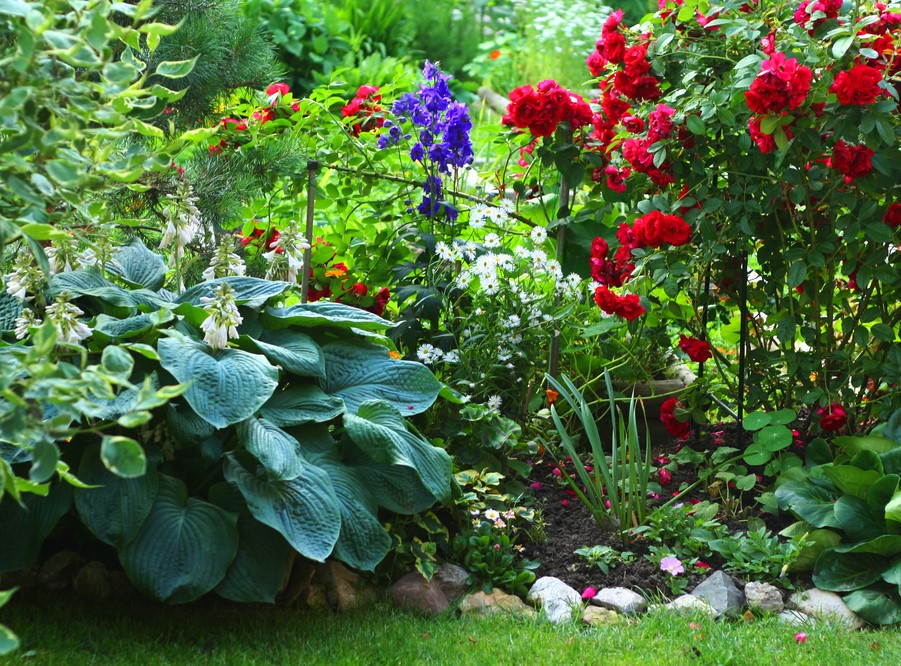
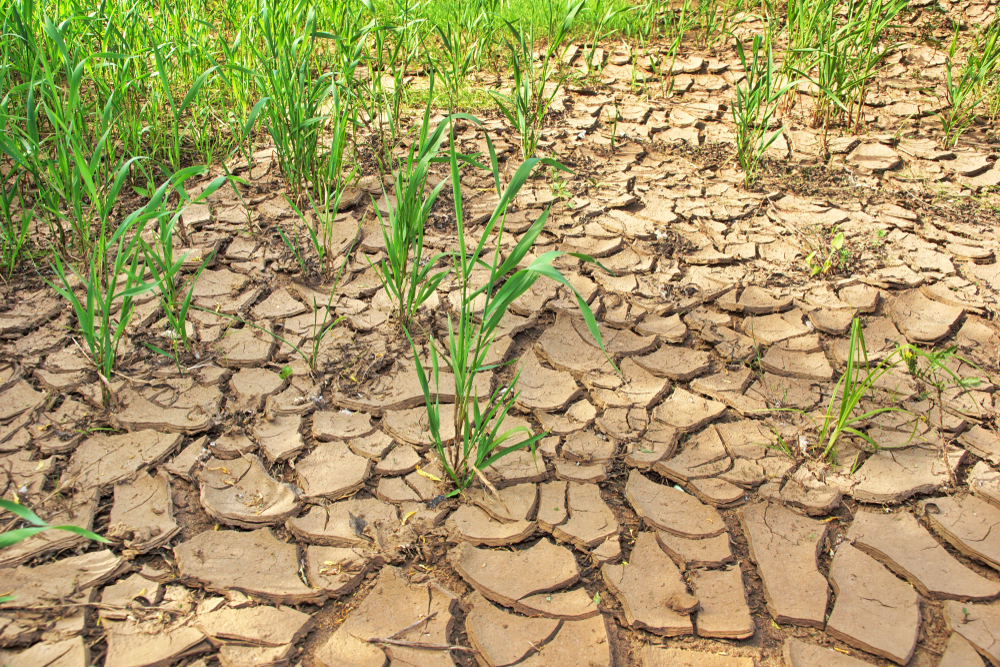


Spring is upon us and many of us are now looking at preparing for our summer gardens. The Bureau of Meteorology recently released their Spring Outlook and it doesn’t look great. Winter in most areas of Australia was warmer than usual (sure didn’t feel like it sometimes) and dryer than usual. This means that the subsoils are dryer than they would normally be at this time of year. Rainfall is predicted to be low in most areas which adds to the woes of the gardeners amongst us.
Gardening in Australia can be tough. We can have extremes of temperature and often we are on water restrictions. There are ways around this, and todays post will look at some alternatives to huge water bills. I am gardening in the Riverina so what I say may not be relevant to you if you are in a different climate zone.
One of the problems (in my opinion) is that we don’t really understand what we are working with. Australia as a continent has been producing enough food for people for centuries but since white settlement, we have been trying to produce different crops utilising methods from other areas, usually the Northern Hemisphere. We are treated to beautiful images of lush green lawns with beautifully coloured flowers and rows of vegetables on seed packets and in gardening catalogues and magazines. This is not totally unrealistic if you are prepared to spend inordinate amounts of money on water or if you live in Britain.
The depth of topsoil in Australia is less than in many other countries which means that we have less to work with and the soil that we do have will dry out more quickly as the depth isn’t there. Pouring water on may help in the short term but once water restrictions hit the plants that may have been thriving will turn up their toes. There are many ways that we can make our task easier and some of those will be discussed in this post. Alternative watering methods will be touched on briefly but will be explored in greater depth in the next post.
Starting from the ground down is a worthwhile thing to do. Adding organic matter to your soil is paramount. The more organic matter in your soil the better it’s water holding capacity will be. Organic matter is literally anything that was once growing so you can add compost, manure (as the by-product of food eaten by the animal it was essentially once growing!), straw, rotting hay, weeds that have been pulled and ideally not those with seed heads. Over time whatever you have added will break down and add goodness to the soil and in the meantime, it is increasing the water holding capacity.
Mulch everything you can with whatever you have available locally. I was able to get hold of some large square bails of hay that had been in the paddock for some years and were destined to be burned. I used them over a couple of years as mulch and while it may not have looked particularly pretty it did the job. Bare earth is your enemy! Where the earth is bare it is open to colonisation by weeds but also it has the ability to lose moisture to the atmosphere and this is something that you don’t want to happen. Mulch around plants so that the moisture that is there stays where you want it to be.
Plant closer together than is generally recommended on seed packets or instructions on seedling labels. In the northern hemisphere, plants need a little more room than they do in our climate. By planting more closely you are less likely to have bare soil between plants and therefore the soil is less likely to dry out.
Don’t plant in neat rows. This is important for a number of reasons. When plants are mixed up they are less likely to be attacked by insects as the bugs are not able to differentiate between them as easily. Additionally, if you mix up your plantings, with some taller and some shorter plants, the taller ones will shade the shorter ones. Try to place plants with similar watering needs together so that there is less work for you with watering.
Water in the early mornings and late evenings so that the water gets the chance to stay around and be useful. Water the roots of plants avoiding the foliage as this is a more effective use of water.
Use alternative methods of watering. You may be able to convert raised beds to wicking beds. Wicking beds will be explored in the next post but basically, they are raised beds with the bottom third acting as a reservoir with the water being poured straight into the reservoir rather than sprinkled on the top. Ollas are a terrific form of alternative watering. An olla is an unsealed terracotta structure that holds water allowing it to leach out slowly. There are other alternatives such as almost totally burying a 2-litre plastic soft drink bottle that you have put a number of very small holes in, at the roots of the plant and filling it with water every few days.
Don’t water your seedlings as often which may sound counterproductive, but it encourages the plants to form stronger and longer root systems which will ensure that they are not as dependant on water.
Choose your plants wisely looking at the watering needs and planting those that are more drought tolerant. Lawn is probably the largest water wasting plant a garden can have. It may look nice and lawn certainly has some benefits in cooling your garden, but the amount of water required by a nice green lawn is very large. Plants such as succulents, natives and Mediterranean plants are much more suitable for our climate.
Grow the plants you absolutely must water and keep alive closer to your taps. In permaculture, this is explained through zoning your garden.
Last summer was particularly horrendous here. The temperature was extreme for long stretches of time and rainfall was minimal. Combined with this we had some things happening that meant we were away from home for up to a week at a time. My garden had to be sacrificed. I still had a fabulous crop of early corn and many later zucchinis and tomatoes, but the decision had to be made that what could not survive without regular watering just had to go. This year I am hoping for a better season and will hopefully be around to water more effectively.
It is possible to grow and produce plants and food that look and taste wonderful in our region but, it needs to be done with a thought to how this is likely to occur and quite a bit of planning and forethought.

What Is Capeweed
Capeweed is a low growing and semi-upright plant. This means that the stems of the plant, don’t grow straight up in the air, but rather out at an angle, to form a rosette. This growth continues until the plant starts to mature and produce flowers. These flowers tend to grow more vertically and can reach up to 30 cm in height.
This weed isn’t particularly fussy, in terms of where it can take hold. Infestations of capeweed have been found in pastures, crops, orchards, gardens, lawns, sports fields, footpaths, coastal environments, bare ground, grasslands and even open woodlands. Although it’s mostly found in semi-arid and sub-tropical regions of Australia, it’s also occasionally found growing in arid and tropical regions. In a nutshell – it doesn’t discriminate.
Capeweed produces around 4,000 seeds, ensuring that it can germinate each year before taking hold in bare or sparsely vegetated soil, or disturbed areas.
How To Kill Capeweed
Anyone who shares their home with animals – big or small – knows that the utmost care is required when using pesticides or herbicides around them. This also applies to farmers with livestock (cattle, sheep, horses) present in their pastures. The good news is that when removing capeweed, there is a natural and chemical-free alternative, that is safe for both human and animal inhabitants.
Bioweed Agronomist Logan Brown is an avid equine lover, and spends much of her time at home riding and training eventing horses. A more recent hobby of hers is retraining racing horses, so that they can compete in the same style of eventing. Needless to say – the arena on her Victorian property certainly gets a workout, and requires regular attention to keep it in top condition. In an effort to combat leafy invaders to her arena, including capeweed, Logan regularly uses Bioweed as an organic herbicide weed killer.
“That’s why here at Bioweed, we recommend that you slush down (or spray with water) your capeweed before applying your herbicide. This will get you better results, but it also can be more economical. Bioweed also has the added effect of seed control, which thankfully allows you to control and stay on top of the 4,000 or so seeds that capeweed produces. You can use Bioweed near your pets and your livestock without having to move them all or keep them out of the paddock or pasture, making it perfect to use around your home or your property.”
If you would like to purchase or know more about Bioweed organic weed solutions, please get in touch with us to discuss ways we can help you combat weeds, organically, at your property.
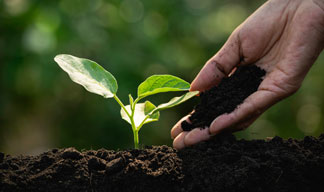
Soil
Soil – it’s not much to look at but when it comes to growing healthy fruits and vegetables, there’s nothing more important. Soil that’s in top-notch condition is the secret behind successful harvests, and now’s the time to prime your soil for the coming growing season.
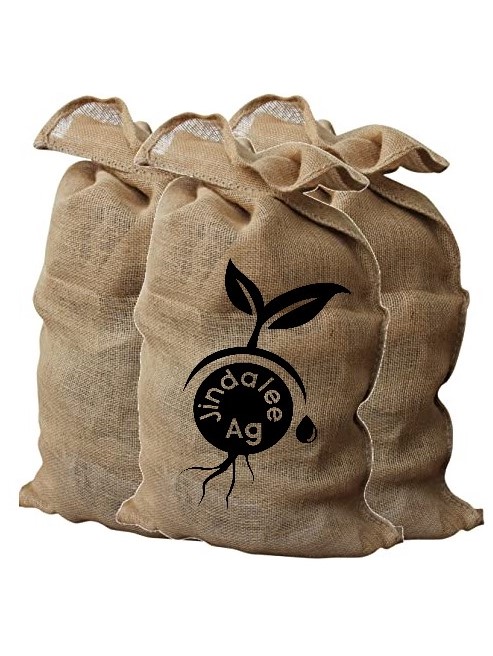
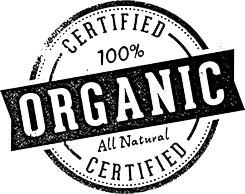
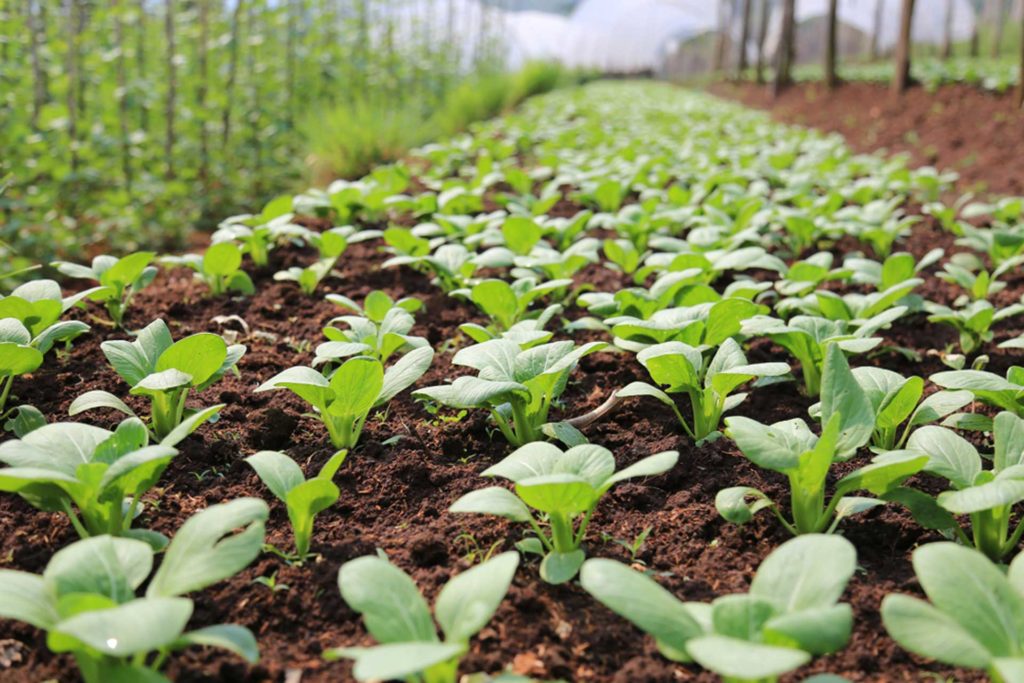
Add Organic Matter
Organic matter is the gardener’s cure-all, no matter what your soil type. It will make heavy clay soils lighter and improve drainage, and it will help retain both moisture and nutrients in sandy soils. Simply put, organic matter of any kind is great news for your soil – and the plants you grow in it!
Organic matter is simply decomposed plant or animal matter – for instance, garden compost, animal manure or leafmould. When added to your soil, organic matter will improve its structure and feed the essential microbial life within it. Compost and animal manure are also naturally packed full of nutrients that will increase the fertility of your soil.
To incorporate organic matter into your soil, first lay it on the soil surface. Be as generous as you can – really pile it on! Spread it out evenly before forking it in to the top six to 12 inches (15-30cm) of your soil. Within a few weeks you’ll notice a boom in your soil’s earthworm population – a surefire sign that all that goodness is getting to work.
Remember to water regularly. Less frequent but deeper watering encourages strong root growth so deep watering twice per week is all that is needed once your seedlings are established.
Children thrive on gardening so involve them in the process and you may find that they will happily eat anything they have had a hand in growing.

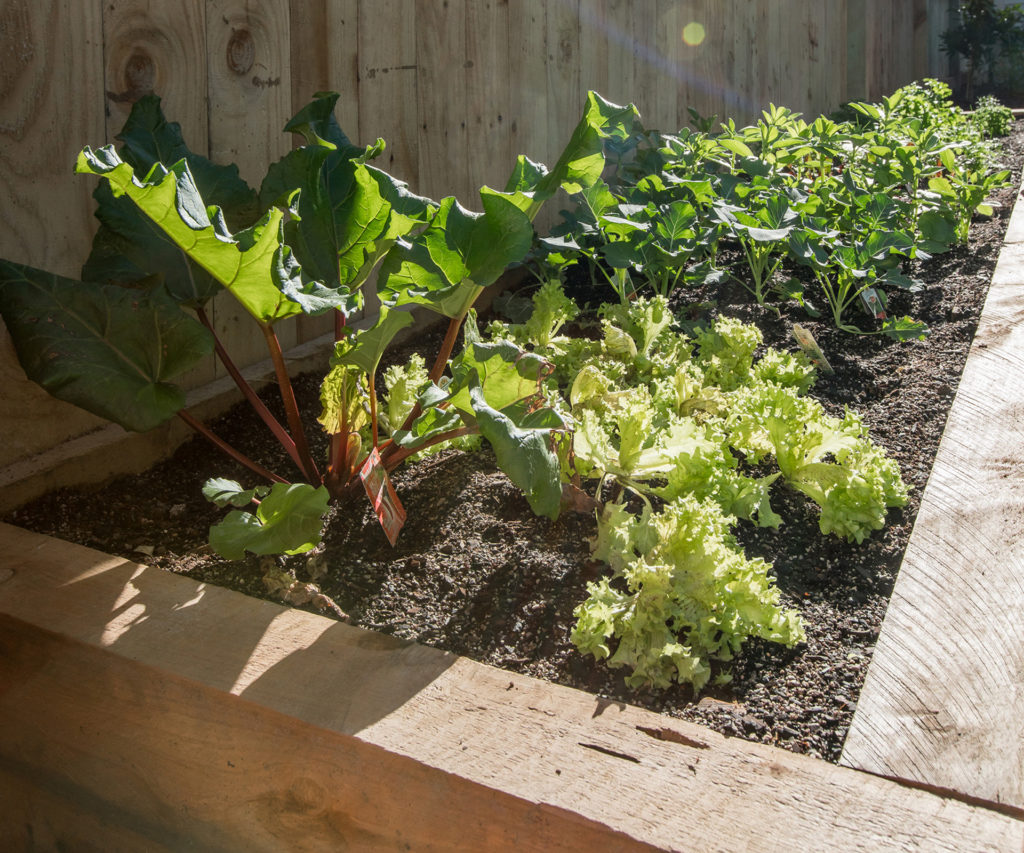
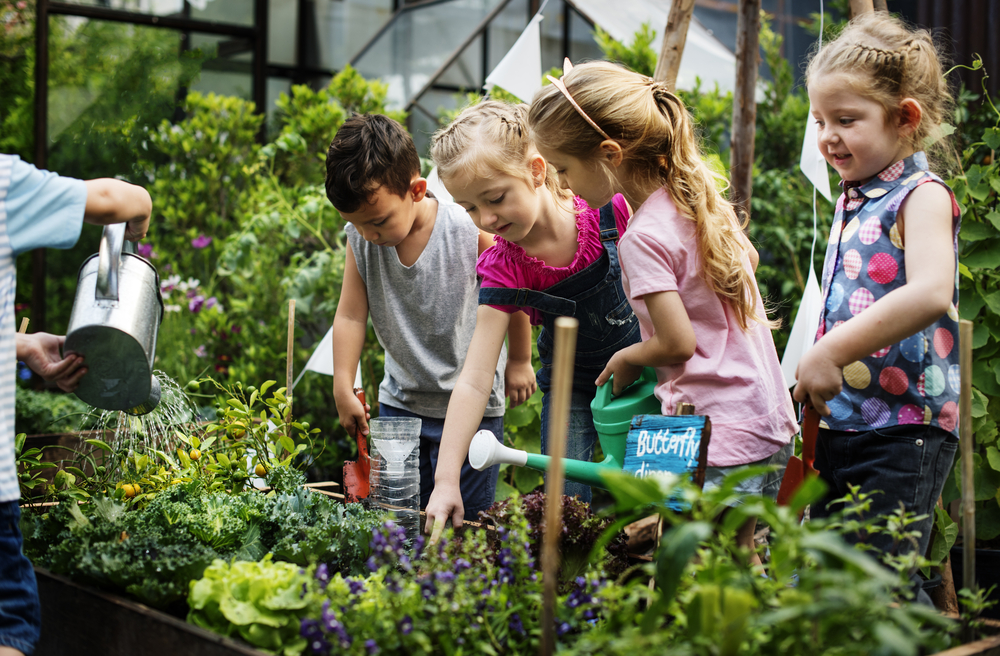
Add Organic Mulch
If your soil currently has crops growing in it, you can spread organic matter as a thick mulch two to three inches (5-7cm) deep in-between plants. The worms will ‘dig in’ the mulch for you, improving the soil for the vegetables to follow.
An organic mulch is the best way to improve fertility and soil structure around perennial plants such as strawberries and fruit trees, bushes and canes, because you don’t want to risk damaging their roots by digging. These robust plants can cope with lumpier or less refined organic matter, including bark chips and shredded prunings. It will also ‘lock in’ moisture, helping you conserve water and making your plants resilient to hot dry weather.
We find ourselves living in an everchanging and unstable world now. Supermarket shelves are empty of many of the products we use daily and people are lining up to be able to buy toilet paper, flour and tinned vegetables. My daughter lives in a small country town with one large supermarket and an IGA. She is unable to purchase onions, potatoes, sweet potatoes or tinned tomatoes and many other areas are facing the same plight. What good is pasta or rice with nothing to put on it and how soon are we all going to get scurvy without fresh vegetables.
The gardeners and farmers of this world and those who have full pantries are suddenly in an advantageous position. Now is the time to get the garden going and plant vegetables. The weather is perfect (I am in the Riverina so any information is relevant to warm temperate regions) for growing now and apparently being outside and getting fresh air and exercise is good for you (who would have known). The catch is though that if you plant the wrong seeds you may be in for a very long wait for something fresh to add to your rice and pasta so you need to get the correct information about what to plant. It is not enough to rely on what the nurseries have in stock as often they will be things that are not going to grow quickly and feed you well or may even be out of season. Plants such as Zucchini and pumpkin will provide prolific fruit but are not suitable to plant right now. Broccoli and Cauliflower are perfect to plant now but they take a long time to produce food.
Suggestions
My suggestions would be to plant quick crops, radish (there are several different varieties), silver beet, rainbow chard, lettuce and spinach will give you food within a few weeks. Green leafy crops are ideal as the leaves can be harvested and the plants will continue to grow and feed you for long periods of time. At the same I would be planting cabbage, cauliflower, broccoli, garlic, carrots and leeks, the crops that grow well through the colder months and you will have a variety of fresh food throughout the winter.
Growing food is not just about popping in some seeds or seedlings and sitting back and watching them grow, then picking and eating. Your soil needs to be fed and cared for. Adding compost before planting is beneficial to growth and feeding the soil while your plants grow will ensure that you have strong and healthy vegetables. You can grow in the ground, in pots or in raised beds (Jindalee Ag have some great raised beds available currently -just do a search on the website). If you are growing in pots or raised beds use premium compost to get the best results. Place some compost in a covered container (I use an old rubbish bin) and fill with water, leave for a few weeks and you have compost tea. Dilute 1 to 10 in water and apply to your plants every couple of weeks and your plants will reward you.
Remember to water regularly. Less frequent but deeper watering encourages strong root growth so deep watering twice per week is all that is needed once your seedlings are established. Keep your beds or pots weed free (start a compost pile to deal with the weeds or feed them to chickens!) and enjoy being outside in the fresh air. Children thrive on gardening so involve them in the process and you may find that they will happily eat anything they have had a hand in growing.
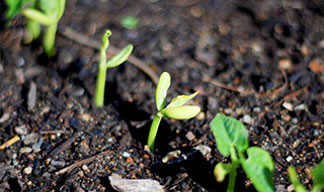

I recently came across an article in the Washington Post published in August 2018, titled “The climate impact of the food in the back of your fridge”. The article states that 30 % of food is wasted (globally) equalling 8% of global greenhouse gas emissions. “If food waste were a country, it would come in third after the United States and China in terms of impact on global warming.” It goes on to point out that in poorer countries the loss is 40% and this occurs during harvest and processing but in medium to high-income countries 40% is wasted after production.
My interpretation of this is that those of us who live in first world countries are incredibly wasteful with the food we buy. Of course, food is also wasted within the retail setting, with supermarkets and other retail outlets contributing their share to the waste. Organisations such as Food Share, Oz Harvest and food banks are endeavouring to address some of the waste. This is an area that each household has a direct ability to address. Knowing that wasting food is costing us money should be a motivating point that encourages us to use the food we buy more wisely but obviously this isn’t enough.
Just the mention of global warming and climate change seems to incite more than debate. Something I read on social media recently really struck a chord with me. I couldn’t find it when I went looking but it said something along the lines of ‘what if we improve the world and climate change turns out to be a hoax?’ My thoughts are Yay! the world will be a better cleaner place regardless!
The last days of 2019 and the beginning of 2020 were horrendous across Australia with bush fires and bizarre weather events including extreme heat over an extended period. As I write this it is 43 degrees in NSW’s Riverina again. Surely anything we can do to make changes that may directly affect what is going on around us is worth doing.
None of us are perfect and even though we are lucky enough to have chickens, dogs and compost to minimise our food waste, there are still times when I find a mouldy gross container hiding at the back of the fridge with no alternative but to go in the bin. I need to greatly increase my fridge awareness so that this does not occur. Currently, I empty the fridge on a Tuesday evening (bin night) but I feel I need to add a second surveillance day into the mix. Luckily, if we have food in the cupboard that is well past its use-by date it can usually be consumed by the chickens!
Food waste occurs most through poor shopping practices with more food being purchased than can be eaten before the quality is reduced. One way to prevent this is to buy only what you need and can use during your normal shopping period whether this be one week or one month. Menu planning is crucial to this. Making a menu plan for one week, a fortnight or a month does not take up a lot of time and has many benefits. I find that if kids have input into the menu plan, they are more likely to eat the meal placed in front of them – a big win in my experience. It also ensures that you have variety in your diet, and you know ahead of time what you will be cooking and eating rather than experiencing a last-minute scramble each day. Knowing what you will be eating each day means that you are able to make a detailed shopping list of the ingredients you will need. A quick scan of the pantry while writing your list will let you know if there are pantry staples that you need to replace.
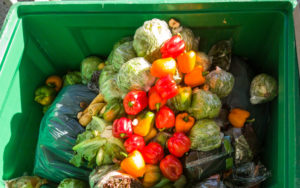
I follow a couple of American blogs focussed on frugal living (I am not saying I put them into practice, but I do enjoy reading them). In these blogs menu planning and food shopping is an artform! You really don’t need to go that far but if you live a busy life it helps take some of the stress away.
Being conscious of left-over food and what you do with it will decrease the incidence of mouldy remains in the back of the fridge. I tend to cook more than is needed (a legacy of growing up in a family of 7) but we eat leftovers for lunches, or they get frozen for future consumption. If I am cooking a meal such as Lasagne or a casserole I deliberately make enough for several meals and freeze them and either incorporate them into a future menu plan or use them when I can’t be bothered cooking or we are later home than usual. We live a 30-minute drive from any takeaways so with this not being an option, having a few ready-made meals in the freezer is a bonus. I also find that if the meals are in the freezer for too long, they are still edible for the dogs and chickens so are not wasted.
In some areas there are groups that will take your food scraps to feed chickens or worm farms or to be composted in community gardens. If you don’t have your own compost this could be a very easy solution for you. Some schools have school gardens with compost bins or chickens. It wouldn’t harm anyone to ask if you can contribute your food waste to these initiatives. The worst that can happen is that they say no and you keep investigating solutions.
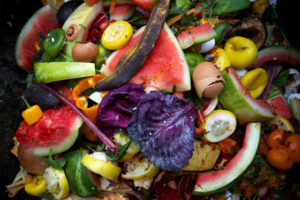
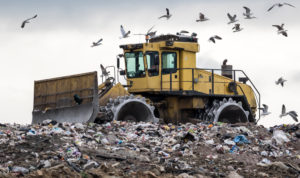
If you are someone who keeps a stock of food in your pantry, make sure you check the dates regularly and rotate your stock so that you use it before it goes out of date. It might seem extreme to some, but I have been known to use products that have been attacked by pantry moths in baked goods that go directly to my chooks. They aren’t likely to find a bag of floor too appetising but if I mix it with some garlic (good for worming chooks) they devour it happily and get the added protein of weevils. To tell you the truth if I was desperate, I would probably sieve out any weevils and still use the flour, what is an extra bit of protein between friends?
Many of the issues in our society are out of our control. I know that I cannot make any changes to the 40% of food wasted in developing countries unless I was able to build more effective factories etc. which is just not within my scope. I can however change the practices of my household and ensure that we are not sending any food waste at all to landfill. I understand that Australia only contributes 3% to greenhouse gases and my little bit of food waste is incredibly minimal in the whole scheme of things but I am going to make the changes that I can, please join me in reducing your food waste too.
It would be great to hear how you are going to make changes in your practices in the comments section on our Facebook page.


Summer is upon us and the weather is quite strange here in New South Wales where I am based. The first day of summer had a high in the low teens and was cold. By the ninth day of summer the temperature was in the very high 30’s and we were all sweltering. Fires are raging across our country and many areas are drought declared with many more being on the cusp of drought. Water restrictions are in force in many locations and if you do not have water restrictions in place you should still be very careful with your use of water.
In many Social Media gardening groups, discussion centres around how to keep your plants alive with strict water restrictions and how difficult this can be. When hoses are not allowed, we need to go back to the way our ancestors watered their precious food crops -saving every drop of water that is not used in the house and bucketing it onto the plants. Saving shower warm up water, having a container to pour left over water from drinks and cooking water from vegetables are some of the ways to be waterwise. Place a bucket under the condensation outlet of split system air conditioners to catch the water, it is surprising how much water can be saved this way. Grey water systems attached to washing machines make use of the rinse water. Always keep a bucket under every outdoor tap that you are using so if there are drips you catch them. It doesn’t matter how you do it, bucketing water onto gardens makes us more mindful of our water use as it is much harder work than simply turning on a tap and moving a hose around. We do not have a sewer system available where we live, therefore we have a recycling waste system that treats all wastewater (using bacteria) and the water is then released onto the garden. The water is not potable and there are regulations about using it on food plants, ours goes on to a large rose garden, and it can be used on lawns and other decorative gardens. We are still very careful about water use, but I feel better knowing that any water we use in the house goes back onto the garden.
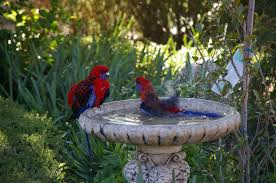
It is also important in the heat of summer to remember not only do our pets require access to fresh drinking water, but the wildlife around us also need water too. Birdbaths can be very decorative but also serve a purpose in a garden. Birds will flock to them for a drink and a bath. It is important to keep them clean so keep a scrubbing brush for the purpose and give it a scrub weekly and rinse out debris. Water needs to be changed daily if possible. Birdbaths are also best placed in an area that provides some shade to decrease evaporation. Minimise access to cats and other predators by ensuring there is no cover for them to hide in and hunt from. Alternatively provide shelter for birds in the form of a thorny bush nearby.
Insects need access to drinking water as well. Providing a shallow dish with some rocks for insects to perch on safely is ideal. Insects are attracted to colours in the yellow and blue spectrum so a narrow dish in these colours is great, but really any shallow dish will do. If you don’t want to, or can’t keep a variety of water sources clean and fresh, place a rock in your birdbath and it will become a multi-purpose waterer.
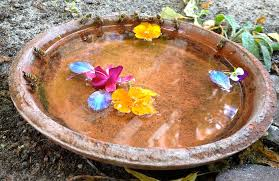
Creating a variety of insect and bird water sources can be a fun school holiday activity. Tip shops and Op shops often have shallow ceramic or glass dishes that can be purchased for very little. Kids can gather the required rocks, and these can be painted with non-toxic paint to add colour. A small watering can that a child can manage can be used to add water each day. Just remember that insect water vessels also need to be kept clean and topped up regularly.
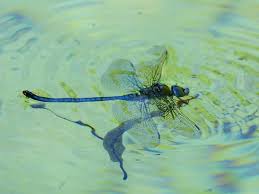
There is always other wildlife around that is not visible during the day. I live in on a rural property so some of the species we may have would include possums, kangaroos, flying foxes and hopefully squirrel gliders and others. Even in urban areas there is wildlife about that you may not be aware of. A ceramic dog water bowl left under bushes and trees will provide a drink to many animals. Remember to clean it and refill it regularly. One bucket of water will fill a number of water vessels in a garden on a daily basis.
As the year draws to a close and summer heats up please be mindful of your water use but also remember to provide drinks for the birds and insects that surround us.
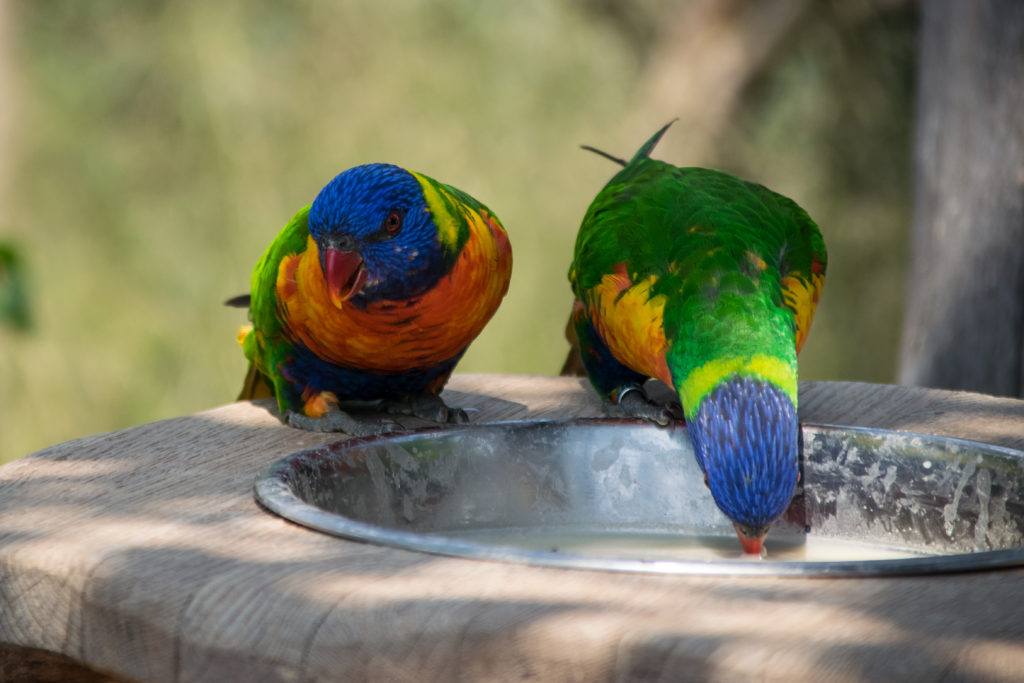
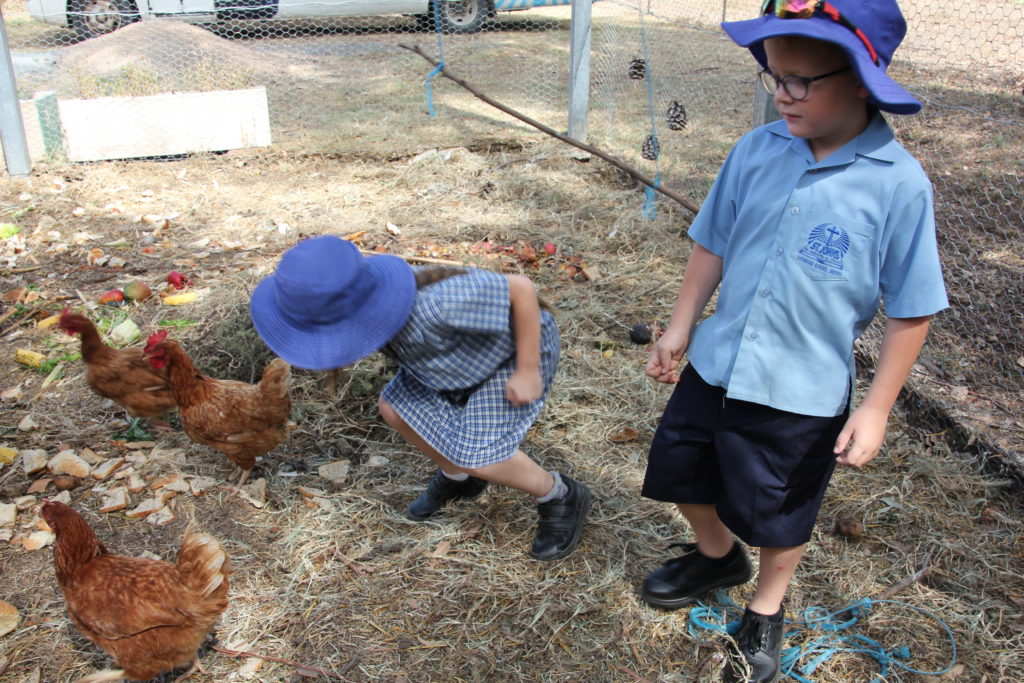
Many schools have school vegetable gardens these days and there is also now a focus on environmental issues. I am lucky to be involved in a great little school – St John’s Lutheran Primary School, in Jindera.
About 3 years ago, the school installed a chicken coop (Cluckingham Palace) and started working towards establishing a kitchen garden. The food scraps from school lunches are gathered each day and fed to the chooks who express their gratitude by laying eggs that are then sold to teachers and parents or used at the school.
Last year when my little person started school I began volunteering for an hour or so each week in the kitchen garden. A variable number of kids join me each week and we work on different projects with a focus on growing food. We gave ourselves the name “The Garden Gang” and it is a pretty cool gang to belong to. I am not the gang leader by the way, I am just the responsible adult who facilitates the gang’s activities and finds the resources for them. The members of our little gang can tell you all about compost with a focus on Pooh! (they are in primary school remember!)
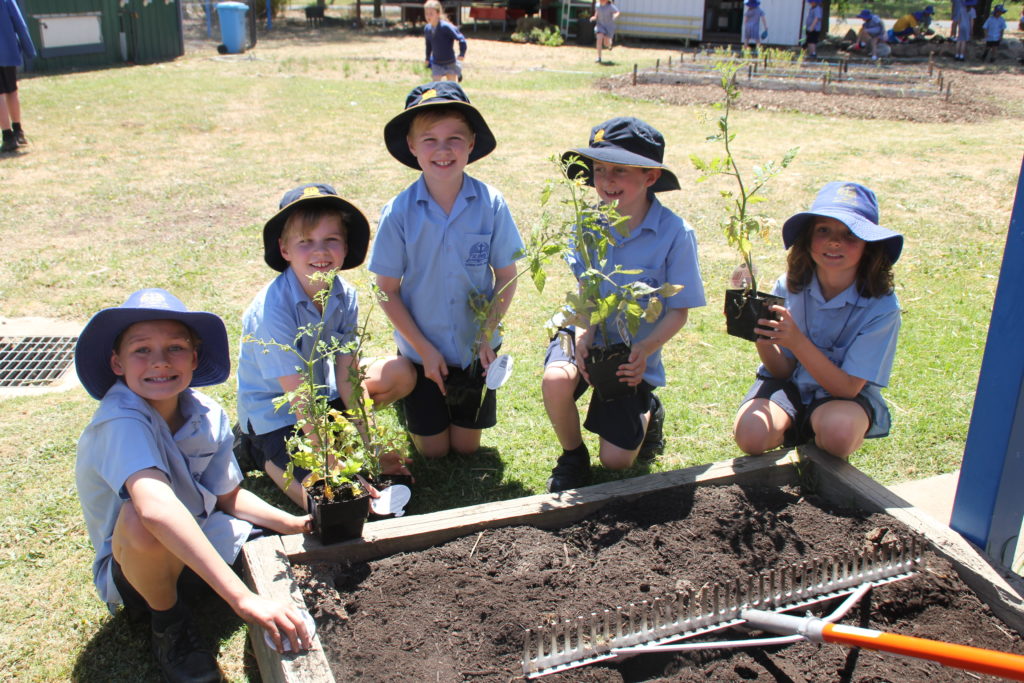
We make our own fertiliser – Pooh Tea – with the droppings from the chicken coop. The boys particularly enjoy giving it a stir and commenting on the slightly odoriferous contents. Some of the girls come just to enjoy a hug with the chooks and I am certain some of the chooks just love their weekly hugs. Each week the worm farm is checked and the worm wee is put out on the vegetables. One of the major events each week is the inspection of our growing vegetables and the harvest and tasting that goes along with that. Radishes were popular but the carrots (that are never going to make it beyond baby size) rule supreme. We pick a couple of buckets of greens and weeds to give to the chooks and worms and generally have a lot of fun. Some of the older boys (10 years old) work incredibly hard each week digging, moving soil and compost, constructing frames for vegetables and building scarecrows.
The learning that happens in the short period of time each week is amazing. Problem-solving skills come to the fore as they learn how to construct what they need from found items. We have had failures along with our successes but that is what gardening is all about. We talk about our successes and failures and how we can do better next time. We have learned about beneficial insects and about those that destroy our hard work. We use natural methods of pest control and work on making sure our soil is healthy and our plants are strong. The best bit about Garden Gang is the enthusiasm these children have for our environment and the joy with which they learn how to grow their own food. Saving and sowing our own seeds has also been a wonderful learning opportunity and their pride in growing plants from seed they harvested is wonderful to witness.
The Year 5 and 6 classes commenced learning in a different way this year using a Project-Based Learning Style. The first project they undertook focussed on the environment and sustainability. The students worked in small groups of 4 or 5 and researched both issues and then formulated responses to the issues. I met with three of the students for a chat about what they learned. I was impressed with their enthusiasm and excitement about their projects and the way they were able to present what they had done to me. Each small group came up with different ideas that they then put into practice and some of these practices are ongoing and having a beneficial impact within the school.

One of the ongoing projects is Nude Food days where the rubbish from each child’s lunch box is counted on a specific day each week and a tally is kept for each class. The students aim to reduce the amount of single-use plastic brought to school and are putting pressure on their parents to help with this. One of the girls I spoke with told me that her mum was already packing nude food and using beeswax wraps before the project commenced but she was in the minority. Others told me how they were able to find suitable small containers at home to replace plastic wrap and they didn’t need to buy any new items. The kids are not perfect (there is still litter on the ground after lunch break) and the lunch boxes (so they tell me) still contain too much single-use plastic but they count that amount and are aiming for a reduction. The conversation that occurs around plastic and litter is another learning opportunity for them. The students are now aware of the impact of their practices on their environment.
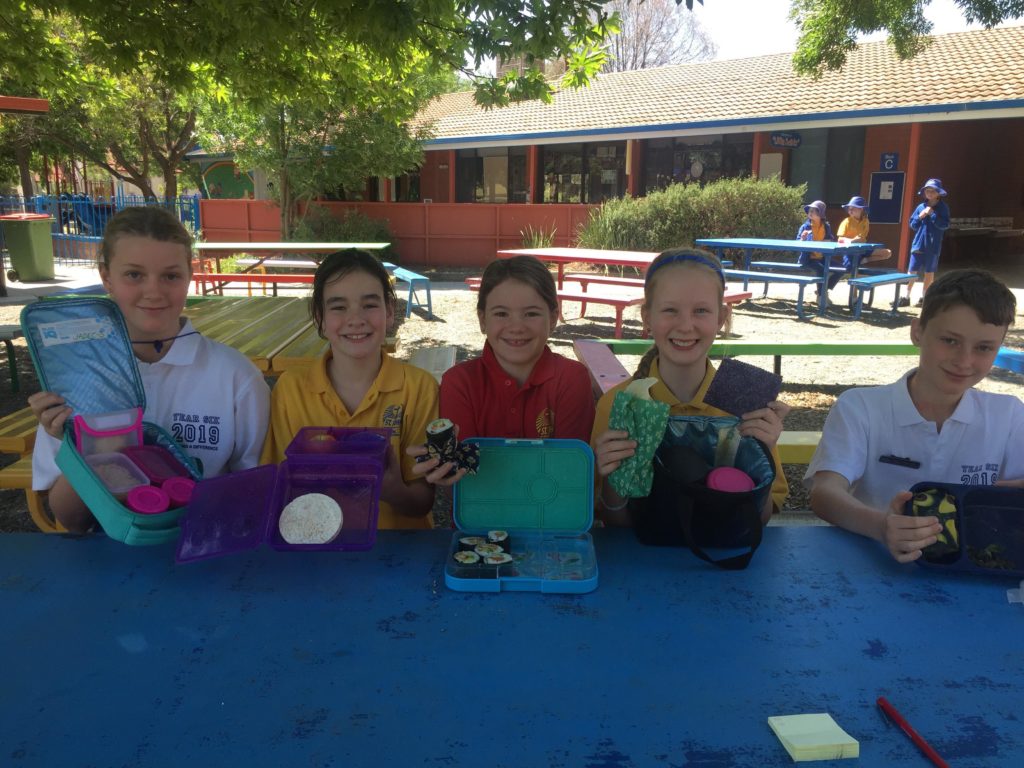
The students also produced some of their own products, learning how to make and package beeswax wraps and reusable shopping bags. One group purchased metal straws in response to finding out how many plastic straws are polluting our environment. The straws, bags and wraps along with some other products were sold by the students to the other students and their families. As a result of their sales the students raised some money and decided that they would put that money into caring for the environment of their school. A compost tumbler, worms for the existing worm farm, seeds and other equipment were purchased and are being used at the school.

It is unrealistic to expect everyone to be 100 percent environmentally sustainable but if each one of us does just one thing differently the impact will be huge.
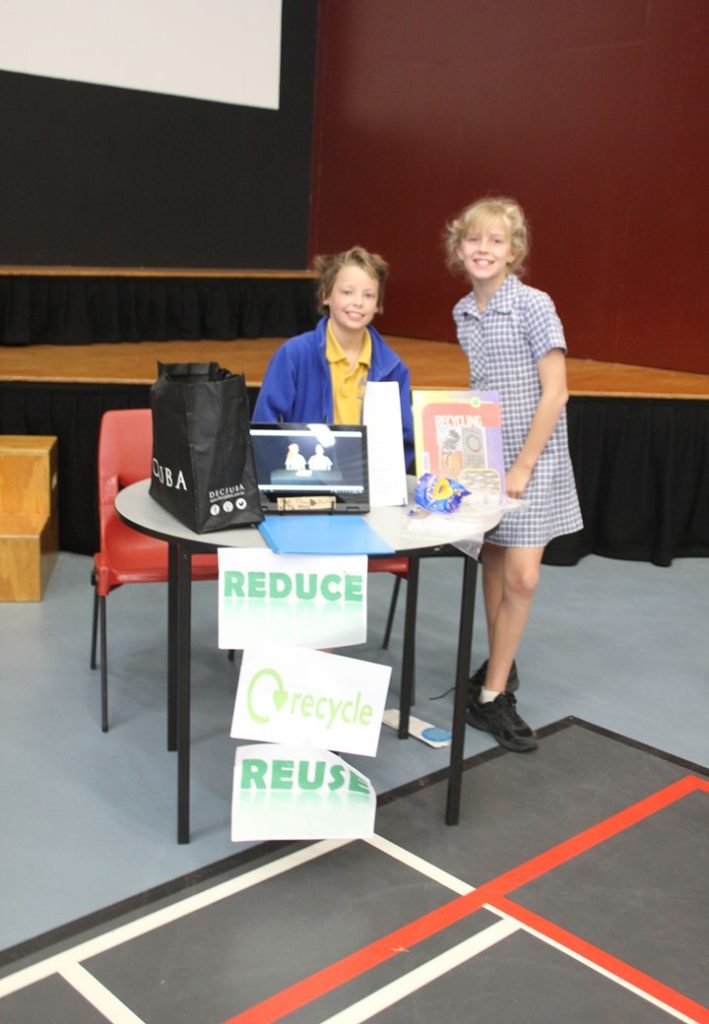
The students at St. John’s and many other primary and high schools are leading the way in taking responsibility for their environment – one that they have the ability to change for the better. We as adults need to join them and get on board in the reduction of single-use plastic.
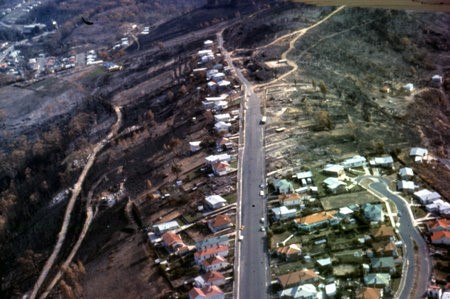
After the fire events of the past week in particular and the past couple of months, I have decided to share a very personal fire story.
On February 7th 1967, I was four years and six weeks old, too young in many people’s opinion to remember too much but believe me, I remember everything that happened that day. We lived in Hobart, Tasmania. It was my first day of preschool and my sister’s first day of primary school. I came home on the bus (the teacher put me on the bus at the preschool end and Mr Dufty made sure I was safe during the very short journey) which was not unusual in those days as men still caught the bus home for lunch and usually my Dad would have been on the bus too but he was away on an Army Reserve camp. Mum collected me off the bus and I clearly remember her saying look at those dreadful fires at Lenah Valley, I didn’t see any fires as I was looking the wrong way towards South Hobart. It was a stinking hot day and I spent the afternoon changing outfits to match those of our next-door neighbour as I played outside. Mum left my eleven-month-old baby brother, toddler sister and I with our neighbour, Ha (and the way she got that name is a whole other story) while she went to pick up my sister from school. (Figure 1 An aerial image of our road after the fires.)

Mum returned about 15 minutes later to find us sitting on Ha’s front lawn with Aunty Sheila (one of those not biological aunts) and her toddler. Our house was right next to a bush reserve and the reserve was on fire as was our house. Mum did not have her purse with her and tried to get into the house to grab some valuables and let the cat out, but the heat was so intense that she couldn’t get to the door. We all crammed into our Hillman Hunter car (tiny little thing), 3 adults and 5 children and down the hill we raced to the Goulburn Street Primary School. The school hall had become an evacuation center and there we sat on the floor. Every time the door opened smoke and dirt blew in. The hall was full of women and children who had no idea if they still had a house or not. Everyone was distressed and I mean really distressed. As the day became evening news would filter in and people were told time after time that their house was gone. On our side of the road, ten houses were destroyed and on the other side it was more hit and miss but many houses went. At some point in the evening, some friends arrived and took us to their house -our house no longer existed. Mum left a note on the door in case Dad went there as she was unable to get in touch with him. The Mills family were wonderful to us. We had nothing except was we were wearing, I had on shorts and a top, my older sister her school uniform and the toddler and baby were in just a nappy. I vividly remember waking up in the middle of the night and my father was there, he and another man from the area had gone AWOL from the army camp to find their families. In the following weeks my Dad and the other man faced a court-martial for their actions but after a public outcry, the charges were dropped. I didn’t know any of that until much later but imagine the stress that added to my parent’s hugely distressed lives.
The following day my parents took my sister to school (St Mary’s College in Hobart) to tell them that they would be taking my sister to the state school as there was no way they could now afford the fees with me needing to start the next year and the other two following after. The nuns told my parents that all fees would be waived until they could afford it and they meant it! We were charity students for many years. As well as that they allowed me to go to school for that week as the preschool was closed and they knew my parents would be busy. They also provided us with lunch for that week. I had a great time at school and was thoroughly put out when I wasn’t allowed to continue and had to wait one whole year before I could really start.
I had a doll just one doll called Topsy. She was a black baby doll and the seam in her head had split a little, so she was held together with Elastoplast (I have one photo of me with her in my arms). I loved that doll and I cried for the next week as she was lost, I also cried for the cat and just cried a lot in general. Marie Mills had just started High School and she and her friends spent a week trying to find me a black baby doll. They found me a black doll, but she wasn’t right and although I still have that doll, I cried some more.
One week after the fires we moved into emergency accommodation with the Toohey family who we lived with for 6 weeks. In the room that my sister and I were to share were twin beds and on each bed was a baby doll -one of them was black and she was perfect -my new Topsy. Of course, I have my Topsy doll to this day, and she has travelled all over Australia with me. That doll means so much to me that I really can’t put it into words.
After 6 weeks we moved in with my Grandfather -poor man went from Batchelor working shift work to being a family man with two other adults and four very damaged children in his house that had an outside toilet and two power points in the whole house. But he had a television which we had never had! We lived with Grandpa for 8 months while our new house (on the same site as the old one) was built.
We were given everything that we needed. I recall going to a charity centre and seeing a rocking horse which we were then given, it still lives at my sister’s house and has been loved by a whole new generation of children. Our swing survived but the seat was burned so someone replaced the seat for us. A woman who my parents had never met bought my sister all the uniform items that had been lost and each of us a piece of clothing. One of Mum’s friends sent 3 little blue corduroy pinafores with red cardigans to match. I have another sister born 18 months after the fire and that poor child wore those pinafores and cardigans year after year.
The point of me telling this story at this time is to point out that an event like this changes you forever. We didn’t receive counselling (just not available then) which is something people today have access to thankfully. My older sister has never spoken about that day and fifty years later still refuses to talk about it. My younger brother and sister don’t have actual memories, but they were still emotionally damaged. My mum never really got over the whole event. Anxiety became something we just lived with. We always had a go-bag ready during summer with the one photo album we had of our baby years (my uncle gathered all the photos my mum had sent to family and put them in a beautiful red leather album which is now in the custody of my sister). Our family history is divided into pre-fire and post-fire. We have no family heirlooms, no baptism dress or family treasures other than my Mum’s engagement and wedding rings. Material possessions can be replaced but nothing is ever the same. The smell of bush fire smoke instantly throws me into severe anxiety. I have a Jackie French book that I was given for Christmas two years ago, but I can’t read it as it is about bush fires. I can’t watch news footage of fires. The thought of people driving past fire scenes for a look makes me incredibly angry. Don’t get me started on looters.
I am a hoarder and I know why! If you lose everything it becomes very hard to get rid of things!
If you know people impacted by fire, have patience, know they are grieving and will for a long time. Don’t use platitudes like at least you are alive -they know that but won’t be feeling lucky in any way. Listen if that is what they need. Give what you can.
Many years after the fire my Mum was talking to a bus driver at our closest bus stop and he told her how in 1967 he had dropped a little girl off at that stop and he had never been able to stop thinking about her and what had become of her on that awful day. Mum was able to tell him that I was that little girl and I was alive, well and rebellious. People who are in the periphery of a disaster suffer too.
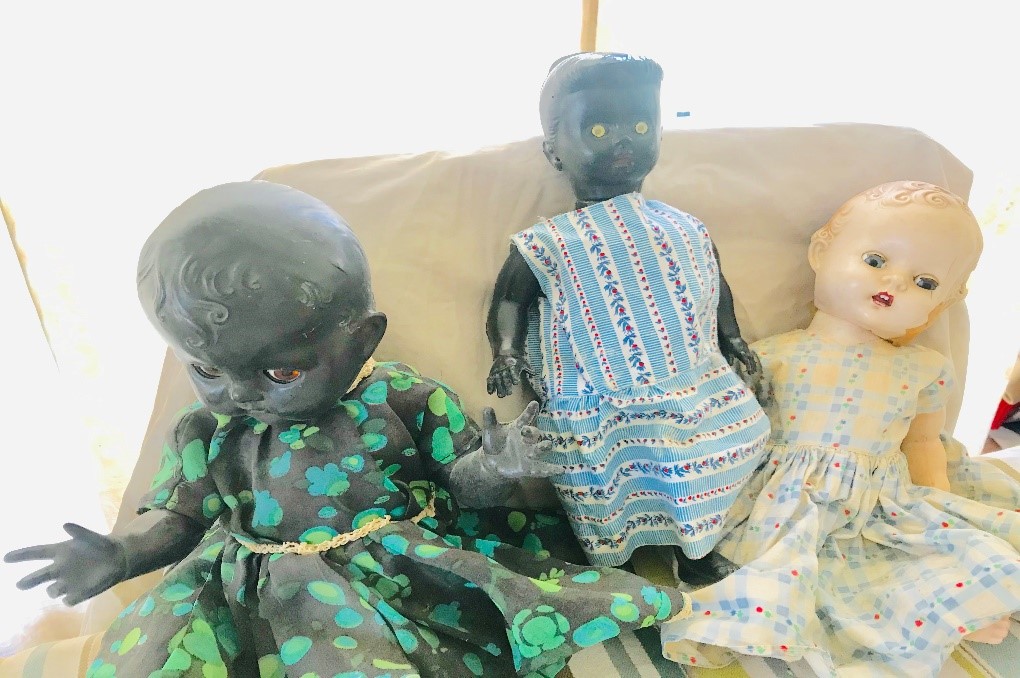
The loss of a doll can represent the loss of everything!

When I need to buy an article (we are not talking a new washing machine here) there are a number of things I do prior to forking out cash to buy it from a shop or off the internet. If, for example, I’m looking to buy honey I want to know that it is real honey and not the one that’s watered down with sugar syrup and colourings. I prefer to buy honey that is local, so I would look at where it is possible to get it in my local area. It may well be that I’m able to barter something I have such as eggs. Homemade sauce or jam, vegetables or plants for a jar of honey. If I’m unable to barter for the honey I need I will investigate if there are farm gate shops selling their honey or it may be possible to find a local shop that sells on behalf of a beekeeper.
Barter is an age-old system that has become less mainstream in our money-driven economy. Some people feel embarrassed to even make an enquiry about the possibility of bartering, but such enquiries may be met with happiness and if not, nothing has been lost and cash can always be produced. Bartering is a fabulous form of local trade and it is possible to barter for many things. If you have a skill that you can put to use for someone or are able to provide goods or a service, it is quite possible that you can barter. I have bartered childcare for freshly baked bread, eggs for dance lessons, sauce and vegetables for honey. My husband shears Alpacas and he has bartered shearing for a new ram, local olive oil and lambs which we have then raised and consumed at a later date.
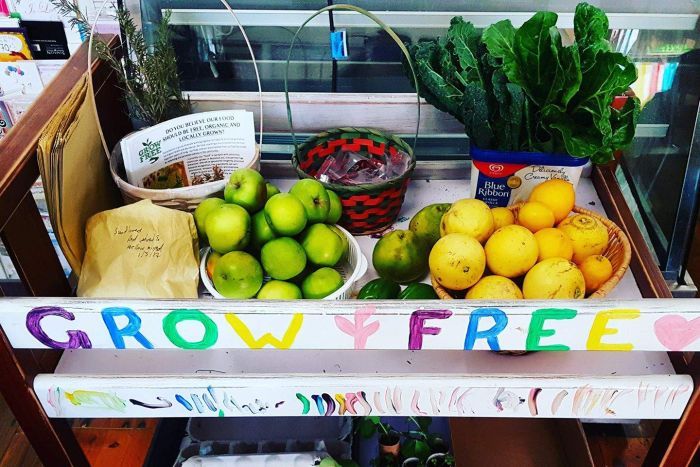
Swapping like for like is another local form of economy. The Grow Free Movement has made swapping popular again and has carts at various sites where you can put excess plants, vegetables, seeds and cuttings and take what is on the cart in return. No one mans the carts or monitors what is given or taken, it is all done on an honesty system. You can find a local Grow Free cart via social media. There are local food swaps that occur at different venues as well and these are a great source of vegetables and plants. A local swap that I have attended even has poultry involved and I have said goodbye to a couple of roosters via this method. Belonging to a local group on social media can give you access to a plentiful supply of items that people no longer need or have an excess of.
As a child, I can remember my mother receiving calls from various friends telling her their fruit was ready. The tribe would then be loaded into the car with buckets and put to work picking fruit -plums, apricots, cherries, peaches and nectarines, which would then be bottled or made into jam with some of the jam being given to the owners of the fruit trees. The owners were happy that the fruit was picked and not left to rot on the ground and they also scored fresh home-made jam. There was an old cupboard in the corner of my fathers’ workshop that housed the bottled fruit and jam. These were eaten throughout the year with whoever was sent to get a bottle of fruit being able to pick their favourite. Apricots were my favourite and also the first to be finished. By the end of winter, there were often only bottles of plums left, obviously no one’s favourite.
If I am not able to barter for or swap an item that I require, my next choice is to buy as local as possible particularly for food items so that I know they are fresh and have low food miles.
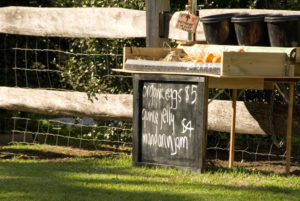
In many rural areas, there are farm gate stalls that have excess produce on them for sale, often via an honesty system. This is a great way of getting fresh local produce and supporting farmers and fruit growers. In a past life, I would drive to Griffith once per month and I would always drive past the farm gate stalls to pick up some great produce which could include watermelons, pumpkins and oranges depending on the time of year. I know that in the Huon Valley area of Tasmania there are some wonderful farm shops that sell amazing fruit at great prices. Three or four bite cherries are my particular favourite if I’m there at the correct season. What can be better than eating fresh produce that has usually been picked that day. If I’m going to buy fruit, this would be my first choice if available.
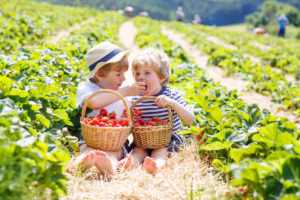
I cannot grow berries! I don’t know why but I kill them each and every time I plant them. I figure that I can’t be self-sufficient anyway as I don’t know how to make shoes, so I let someone else grow the berries for me. Every year we go on a drive to Stanley and pick kilos of berries and their cherries too if they are available. It has become a tradition that a friend and I go each year, the time varies depending on the season we are having but the trip is always made. After getting the berries home they are either frozen immediately for use throughout the year or are made into ice cream, jam and sauces. Berry season should be with us in about 6 weeks and I am looking forward to it as my berry store is finished for the year. I do not buy berries from the supermarket as they tend to come from other areas and I refuse to buy frozen berries, particularly after recent scares around contamination issues. My annual visit puts dollars in a local farmer’s pocket, and I know where the product is grown and how many food miles are involved.
I do buy mangoes, avocadoes and pineapples from shops as my alternative is not to have them or to move further north.
For non-food items, I also try to buy from local producers if at all possible. A shop recently opened in Wodonga (That Little Place) and their point of difference is that they stock products from local producers and artisans. There are often small art galleries that have the works of local artists (not limited to paintings) where you can find unique pieces across many price ranges.
Another amazing recent social media initiative is the Facebook page One Day Closer to Rain (Drought) – Rural Cottage Crafts. This group is national and showcases the works of rural people across Australia. There are a huge array of beautiful items available and your money is supporting rural small businesses.
Before pulling out your wallet or purse and buying from large chain stores and supermarkets, please think about your shopping practices and investigate what there is in your area and the local businesses you could be supporting. Don’t be embarrassed to barter or visit local swaps or Grow Free carts, you may be missing a fabulous opportunity.
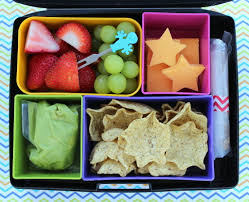
It is the time of year when people are getting organised for their little one to start school next year. Orientation days are occurring, and little people are either excited beyond belief or filled with trepidation. Parents are starting to think about uniforms and school bags along with lunch boxes and drink bottles. The Christmas before school starts is probably the only one that you will get away with school gear being received with excitement. School hat and bag along with a lunch box and drink bottle make a great present. Buying a good quality school bag is a sound investment as it is likely to last a number of years rather than being almost disposable. Plain bags are also a better idea than one covered in the child’s favourite character -you can almost guarantee they will be completely over the character bag in twelve months even if the bag has plenty of life left in it. Uniform bags seem to be good quality and reduce competition for who has the better bag.
School lunches can be the bane of a parent’s life! What to pack, quantities, how to keep it cool and edible are all topics that parents stress over. Many schools have policies around what can and can’t be packed in lunch boxes including nut-free policies. Schools are now starting to engage in the ‘nude food’ trend with items wrapped in plastic being either banned or frowned upon. I have seen many discussions on social media lately about the trend towards nude food – not all positive discussion by any means. Words like “lunch box Nazis” and “plastic police” are being bantered about. I believe that to create change we need to start with children who then put pressure on their parents for positive change. This process is now occurring, and some parents are very resistant to change. This is a very natural part of the process of change but one that seems to take on a life of its own with social media groups bringing the discontent together. Those who are happy about change tend not to engage in the conversation, so it is the negative viewpoint that is heard. Eventually, things will settle, and nude food lunch boxes will be the norm.
The cost of purchasing good quality food containers that last well and stand up to the treatment that children will put them through may seem prohibitive initially, but long-term money will be saved. Kids need to be taught to recognise their own items (good name labels will help with this) and to put their belongings back in their bags so they go home at the end of the day. Expect a few losses occasionally but if it is happening frequently you may need to speak to your child’s teacher to come up with a strategy to prevent it.
There are many different options for school lunch containers these days from thermal-lined containers that you can add a small ice brick to, up to amazing bento boxes and thermos flasks. Washing lots of little containers at the end of the day may not be a super fun task and certainly throwing plastic wrap or bags in the bin may seem like an easier option but the damage all that plastic is doing to the environment is worth the effort.
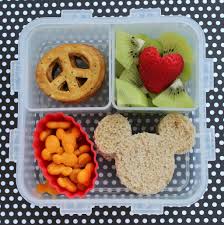
The school my child attends has been auditing the litter in lunch boxes every Wednesday for the entire school year. The litter is counted (this does not include food waste which is put into containers and fed to the school chooks and worms or put in the school compost bin) but empty plastic packets or plastic wrap is counted. My child obviously knows my interest in this area and frequently reports back to me on the number of pieces of litter from his class. One day in the first term of school there were more than 3 pieces of litter per child in the class. I know my child and one other did not have any litter so some of them must have had heaps of pre-packaged food in their lunch boxes. The fact that he is interested and many of his classmates are now engaging in the process gladdens my heart.

I know I have talked about tips to reduce lunch box litter before but it seems a good time to go over it again. Homemade biscuits and snacks are great because you know exactly what goes into them and can control things like the amount of sugar you use. It is also easy to make sure your home-made goodies are the right size for your containers. Bulk baking things like muffins once per month and freezing them is a great idea. In summer frozen items help to keep everything else cool and will be thawed by the time the child is ready to eat it. In our time-poor lives, it may be beyond many people to provide homemade food for school lunches and there are plenty of other options that don’t involve plastic wrapping. Buying food that is not individually wrapped is not difficult and it is easy to put a few biscuits or snacks into a container. The one thing that I haven’t found free of individual wrapping is muesli bars! Fruit makes an excellent snack and things like bananas, oranges and mandarins come in their own very natural wrapping and no need for further containers.
Another issue that occurs at the beginning of each year is the schoolbooks coming home to be covered. I totally get the fact that books that are covered in contact stay neater and last much longer than those that aren’t, but I am a total contact klutz – bubbles and wrinkles just seem to occur no matter how careful I am, I hate hate hate contact and the fact that it is plastic just makes it worse. You will never find my name on a list of volunteers to cover new library books – that is a disaster just waiting to occur. Last year I discovered that someone had invented slip on plastic covers for schoolbooks (I figure it was another contact klutz that came up with the concept). I know they are plastic, but they last for longer than 1 school year and can be removed if the books are being tossed or composted. Sometimes it is a matter of the lesser of two evils. Roll on high school when folders with loose leaf paper are the norm and don’t need covering, just another five years to wait …….. audible sigh!!!!